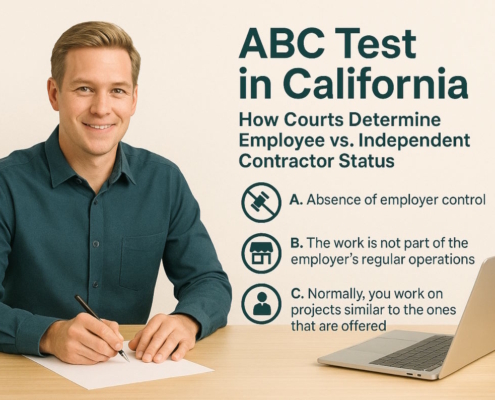What is the point of a performance appraisal?
Performance reviews play a major role in decisions about awards, promotions, and ongoing training. Performance reviews are viewed by many businesses as just a necessary evil. Without a second thought, they are conducted and discarded. But, if used to its fullest, this method offers a host of advantages that guarantee you maintain your staff members’ engagement and productivity.
This guide provides you with the necessary knowledge and tools to conduct comprehensive performance reviews and make the most of them. Now let’s get started!
A formal process that is planned on a regular basis, a performance review assesses an employee’s overall performance as well as their contribution to the organization with the aim of enhancing that performance. It may also be known as the employee appraisal or performance evaluation.
Performance reviews serve as a forum for criticism, a formal point in time for assessing work performance, and a tool for allocating bonuses and raises to staff members. This usually occurs once or twice a year, at the beginning and in the middle of the year. These are official meetings where the employee’s primary manager or supervisor assesses how well they are performing in relation to their primary duties.
Usually, managers carry out the performance review process once HR has provided an outline for it. Active employee participation generates the buy-in required to implement the changes that the performance review was originally intended to address.
One of the main objectives of performance reviews is to find areas for development based on pre-established goals and measurements. For instance, in order to perform better, departments or personnel may require specialized training.
What is the meaning of work performance?
The extent to which a worker completes the duties outlined in their job description is known as job performance. This is sometimes referred to as “in-role performance,” and it entails fulfilling performance standards and reaching goals.
Workers can also benefit their company by engaging in non-task-related behaviors, like supporting coworkers and volunteering for purposes other than those assigned to them. We refer to these as organizational citizenship behaviors, contextual performance, or extra-role performance.
Both in-role and outside-role actions should be taken into account when evaluating performance.
What distinguishes performance management from performance reviews?
Any interactions that help increase performance between supervisors and employees are included in performance management. On the other hand, performance reviews are only one facet of the cycle of performance management.
All of the official and informal meetings that we specified in the table below are included in performance management. These can be scheduled meetings or spontaneous ones.
What does a performance review aim to achieve?
The goal of performance reviews, as we’ve already discussed, is to constantly improve workplace culture and performance inside the company. Let’s examine the goals of performance reviews in more detail. Among them are:
Figuring out how each worker can get better at what they do
Workers can benefit from specialized training to acquire the extra skills they need to do their jobs more effectively. In other situations, new hardware or software might be required. A performance review helps to identify and record these needs.
Recognizing departmental and organizational strengths and areas for growth
What does each department lack? To operate at their best, for instance, do they require more personnel, equipment, or funding?
Choosing the most effective way to distribute resources, promotions, and awards
You may determine which employees are most worthy of awards and promotions by using performance appraisals. Additionally, a review of performance reviews reveals which staff members and divisions stand to gain from specific resource allocations.
Getting records on worker performance
Decisions about promotions, disciplinary actions, and terminations are never simple. Formalized performance reviews give documentation that can be used to support objective, defensible conclusions based on preset standards in the future.
Have the instruments necessary to set performance targets for the future
The objectives and benchmarks your organization is currently meeting can serve as a useful guide for future goal-setting and the rate at which it can accomplish them.
What makes performance reviews important?
When performance appraisal goals are met, businesses have the foundation they need to develop and flourish. The following are some examples of how performance reviews affect the organization and demonstrate their significance:
Encouraging employee development and progress: Performance reviews give workers the chance to find out where they can go in their careers within the organization and how to get there.
Increasing worker retention and engagement: Employee engagement is maintained when they perceive prospects for progress inside the company and receive constructive feedback. It encourages people to stick around longer as well.
Closing skills gaps and improving organizational performance: Organizations can reduce skills gaps, gain a competitive edge, and prepare for the future by identifying areas for development, setting targets, and developing plans for staff advancement.
Grace Ewles, Manager of HR Research & Advisory Services at McLean & Company, states that it is crucial that managers understand the link between high-quality performance metrics and continuous input to both personal and corporate success.
Strengthening communication: By regularly discussing performance, objectives, and expectations, managers and staff can make sure that everyone is aware of and committed to the company’s objectives.
Promoting accountability: Establishing clear expectations in a structured environment for staff members aids in fostering accountability for meeting those standards.
Ethical and open decision-making: A systematic and uniform method for assessing employee performance is provided by a well-organized performance evaluation process, which can promote impartial decision-making and lessen bias.
Techniques for performance evaluation
You can use a variety of performance appraisal techniques as the foundation for your personnel assessments. The ideal option for your business will rely on its objectives, organizational culture, and size. Let’s examine five of the most widely used techniques for performance reviews.
- MBO, or management by objectives
Together, managers and staff create goals and objectives. They evaluate the employee’s performance on a regular basis and point out areas for improvement.
Pros: Goals are more feasible since management and staff collaborate. Also, measuring both qualitative and quantitative information is made simpler. Employees value being included in the process.
Cons: Paying too much attention to the goals could mean neglecting other aspects of the job, such as workplace culture and employee behavior. It takes a lot of time to implement and run.
- Full 360-degree analysis
Getting performance reviews and comments from vendors, customers, managers, and other coworkers is known as 360-degree feedback. Managers evaluate employee performance using this information.
Pros: It’s a great tool for developing leaders and helps with performance and communication.
Cons: It could be challenging to get feedback. Frequently, there is inadequate alignment with the company’s plan and an absence in follow-up.
- Evaluation by peers
The peer review process uses other employees’ opinions to gauge an employee’s performance. Feedback is typically given by team members who collaborate closely with the worker and are aware of their strong and weak points.
Pros: Peers better understand the strengths and weaknesses of a worker.
Cons: Emotions could get in the way of impartial criticism.
- BARS, or the Behaviorally Anchored Rating Scale
A predetermined set of performance standards are used in the Behaviorally Anchored Rating Scale (BARS) technique, where each level of performance is described by a distinct behavior. Next, the employee’s performance is graded in relation to the standards.
Pros: Clear standards that are consistent, impartial, and simple to use once implemented.
Cons: Expensive, difficult to create and deploy, and time-consuming.
- Graph-Based Rating System
The Graphic Rating Scale approach ranks employees according to each trait using a list of expected behaviors for each function. Teamwork, accountability, time management, and job skills are a few examples of characteristics.
Pros: Simple to use, quantifiable, and affordable.
Cons: It’s subjective and challenging to assign a higher value to certain attributes than others.
Five guidelines for an effective performance review procedure
Since no two businesses are alike, each will have a unique performance review procedure that is optimized for its particular setting. To establish a successful assessment procedure at their company, HR departments should adhere to a number of best practices.
- Make sure the sessions for the performance review have a defined agenda.
Naturally, it’s possible for managers and staff to feel uneasy during the performance review. This is typical as the evaluation’s result affects the employee’s future.
By creating a form or blueprint for performance reviews, HR may ease some of this uneasiness. Both the meeting’s planning and the performance assessment itself will benefit from using a work performance evaluation form or another assessment outline.
Each kind of role will have a somewhat distinct format, depending on the particular responsibilities of each position. To ensure that the appraisal proceeds successfully, it is imperative to develop an understandable and user-friendly framework that managers may refer to.
Performance reviews may be directly tied to compensation increases and other incentives, which is another factor contributing to their stressful nature. Psychologically, an employee’s inherent motivation to deliver excellent work might be destroyed if the evaluation is linked to financial gain. Joel Trammell, Founder and CEO of Manager360, a manager development and software company, points out that it may also lead to feelings of unfairness when the manager’s blurred memories are used to justify awarding or refusing an incentive. He claims that it is preferable to use performance reviews as a forum to talk about how employees are meeting their goals, provide comments, and provide coaching on areas of personal interest. The manager can talk about bonuses and pay increases separately. Bonuses should be based on reasonable market prices for the work being done.
Additionally, HR should design the procedure to minimize various forms of prejudice in managers’ performance reviews and educate them about these biases.
It is important to confront biases such as the halo effect by demonstrating to team members what positive criticism looks and sounds like. More team members participating in the review process and getting different perspectives on their performance are other ways to get across this kind of fairness barrier, according to Matthew Meadows, CEO and co-founder of the performance assessment software WorkStory.
Furthermore, recency bias may lead to problems with the accuracy and fairness of performance reviews. To address this problem, we would advise businesses to put in place a more continuous review procedure.
- Include the staff members as much as you can.
Workers who actively participate in their performance reviews are far more satisfied with the results because they value the opportunity to voice their opinions. Human resources departments must to devise a procedure that optimizes worker participation by giving them a chance to clarify actions, respond to inquiries, and offer advice on how to do their tasks more effectively.
According to research by Cawly, Keeping, and Levy (1998), employee participation and a favorable response to the performance review process are highly correlated. According to the data, employees who took part in the session had a significantly higher likelihood of rating it as fair and beneficial. Additionally, they had greater motivation to raise their game.
Employees that actively participate in the performance appraisal process react better to the results, according to a second study done in 2012 by Kim & Holzer.
- Motivate supervisors to change the way they communicate.
In order to provide feedback to staff without simultaneously nuking their motivation, managers must adjust the way they communicate. Everybody prefers to receive bad feedback in a different way. While some people like their bosses to be direct, others prefer a more nuanced style. It is critical that HR train managers on how to provide their staff members negative feedback in a variety of ways.
The bad news is typically reserved for the very end of a performance review. This indicates that management and staff are apprehensive about the session’s less savory aspects. According to Daniel Pink’s (2018) research, employees are happiest when they receive negative news early in the interview.
By starting with the areas that need growth, both partners can unwind for the duration of the session. By including this technique into your procedure, you can guarantee a more fruitful meeting and a successful conclusion to the examination.
Mock-feedback sessions are another way that HR can train managers to provide better feedback, says HR consultant Jana Tulloch. Managers can practice providing both negative and positive feedback during these sessions. Helping managers provide their team targeted, useful feedback is the goal, according to Tulloch.
Likewise, Joel Trammell of Manager360 suggests emphasizing “feedforward.”
Performance reviews that concentrate on an employee’s future potential rather than doing a thorough analysis of their past failures are noticeably more successful. For example, if you criticize a mediocre presentation someone made, you make them feel powerless. Trammell asks, “What can they do about it now?
Rather, discuss the changes you hope to see in the future. This “feedforward” method helps employees see a bright future and reduces the tension associated with difficult conversations.
- To motivate performance, make sure there is more feedback.
Sixty-three percent of workers desire more “in the moment” feedback on how they are doing at work. They are curious about what they are doing well and where they may make improvements.
Companies may look into additional methods to support managers in maintaining closer communication with their teams, in addition to raising the frequency of performance reviews from once a year to twice a year or quarterly. Let’s examine several approaches to giving feedback that don’t involve yearly performance reviews:
One-on-one meetings: With this strategy, managers promise to check in with staff members at least once a week to give and receive feedback.
Departmental meetings: Managers convene weekly or monthly department meetings to evaluate team performance and offer helpful criticism.
Emails: Weekly or monthly emails that highlight each employee’s strengths and areas for development can be sent to the organization as a whole or to specific employees, however they are less intimate.
Apps for performance reviews: Apps for performance reviews are a great tool for managers to quickly evaluate employees’ work and provide them feedback. There are platforms that are a component of larger, cloud-based performance management solutions as well as stand-alone appraisal systems.
According to most employees, the purpose of performance reviews should be changed from assessing past work to focusing on future improvement. The best way HR can assist with performance reviews is by training managers to be outstanding career mentors.
The goal of a well-designed performance review process should be to assist staff members in identifying career paths that best suit both their interests and the goals of the organization.
- Carefully record the meetings you conduct for employee performance reviews.
The purpose of performance reviews is to collect data that will be used for future decision-making. It may take weeks or months to make these conclusions, and it may be challenging to recall every aspect of the performance review meetings.
To ensure that the information is easily accessible when needed, make sure to design a process that calls for thorough documenting in a uniform manner. As already discussed, two options exist for continuous feedback strategies: a talent management system or an app for performance reviews.
According to a NeuroLeadership Institute study, 91% of businesses that use ongoing performance management report having better data to guide personnel decisions. These businesses also claim to have made significant strides toward eliminating bias in advancement and promotion.
How to draft a form for performance reviews
Creating a comprehensive form for evaluating an employee’s work performance sets the stage for gathering important data. A thorough job performance evaluation form consists of multiple components.
Determine skills
There is a predetermined set of competencies needed to perform every job position successfully. These skills are divided into groups:
Essential skills: These are competencies particular to a job. Regardless of their title, all employees within the company require certain core competencies. The company board sets them, and the higher the needed proficiency level, the more senior the position.
Being commercial for a consulting firm, where partners and associates must collaborate to increase revenue from both new and current clients, may serve as an example of this. To varying degrees, being commercial is a must for all occupations.
Both HR and the direct manager determine the competencies specific to a given job. The competences listed below are necessary for every role. A graphic designer, for instance, must be skilled in graphic design software. Following that, employees are ranked using a chosen rating method, such as the previously described BARS or Graphic Rating Scale, for each competency.
Scales of job performance and behavior
When examining individual performance, it is not realistic to develop a unique evaluation for every function. Rather, researchers looked for a single method to evaluate each one. When creating your own performance review form, this can be useful.
Researchers use an instrument that measures both in-role and extra-role behavior. Any behaviors relevant to the job description of the employee fall under the category of in-role behavior. One fast way to evaluate someone’s performance is to have a direct supervisor respond to questions like these, which include the following claims.
- Employee meets the goals of the position
- Employee satisfies performance requirements
- Employee satisfies every requirement of the position
The extra-role behavior component is the second aspect. All behaviors that go above and beyond the work description are considered extra-role behaviors. This include planning a team outing, lending a hand to coworkers, and more:
- When they are not there, an employee assists other employees with their work.
- When an employee’s workload grows, they assist others (helping others overcome obstacles).
- Employee offers to perform tasks that are not officially required of them.
The supervisor can evaluate the employee’s performance on both aspects based on the scores obtained for these behaviors.
An item regarding the employee’s potential is a last component that is frequently added. Does the worker still have a lot to learn or is he or she ready for an upward promotion?
The job position, not the individual, should be the basis for performance management procedures. Furthermore, how well the employee is fulfilling the job standards rather than the manager’s opinion of them. Building process trust begins with making the goals and standards of the performance management process clear from the start.
Examples of performance reviews
Let’s examine a few examples of both positive and bad performance reviews.
Timeliness
Positive: Employee regularly arrives at work on time, completes all assignments on time or ahead of schedule, and shows up on time for all scheduled meetings.
Negative: The employee frequently arrives late for work and submits assignments after the due date.
Responsibility
Positive: The employee always stands up and takes responsibility for their part in the project, regardless of the outcome.
Negative: The worker does not accept accountability for their conduct. They frequently assign responsibility to others.
Interaction
Positive: The worker’s communication abilities are outstanding. Before ending a conversation, they always make sure that everyone is in agreement.
Negative: The worker’s communication abilities are lacking. Confusion frequently results from fellow peers and customers not grasping the intended message.
According to Joanna Kemper, a coach for leadership development, managers should make sure that whatever criticism they provide is grounded on concrete instances and a consistent pattern of behavior. In the end, Kemper says, performance reviews should not be a surprise; rather, they should be a continuous dialogue that takes place all year long.
In conclusion
Performance reviews are more than just administrative procedures. They give decision-makers useful data regarding worker performance, which they can use to determine how best to distribute funds, incentives, pay increases, and promotions. Utilizing employee performance metrics, these reviews can precisely gauge individual and group contributions. This data is also essential for identifying areas that want improvement and those that are doing well.
Comprehensive performance appraisal procedures that enable businesses to make the best use of the data gathered should be developed and designed by HR departments. In this manner, they help companies encourage employee development, assist in improved decision-making, and eventually boost organizational performance.































